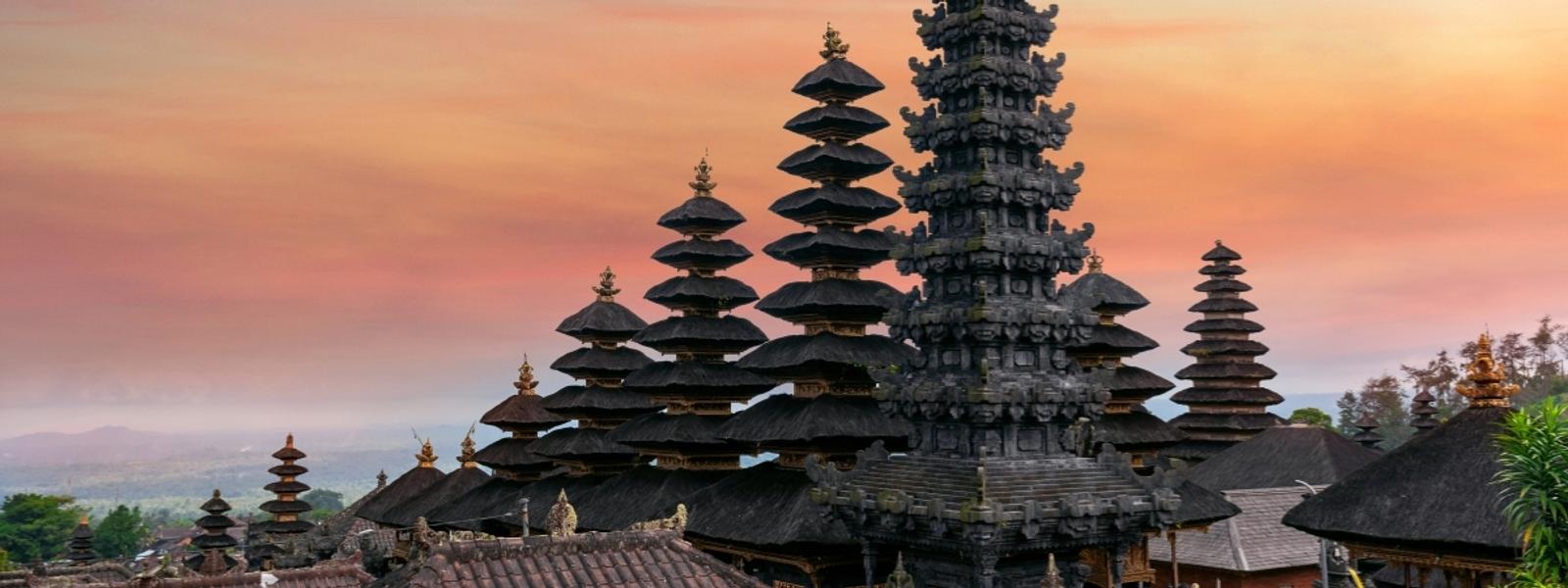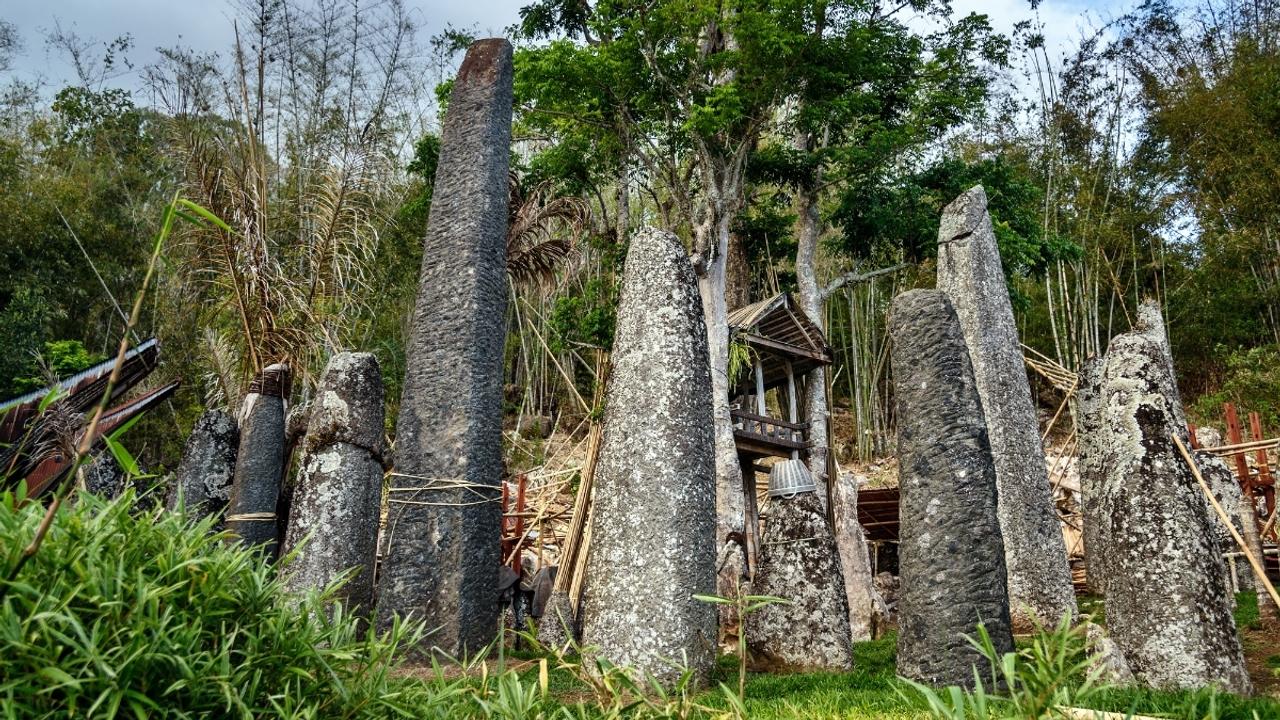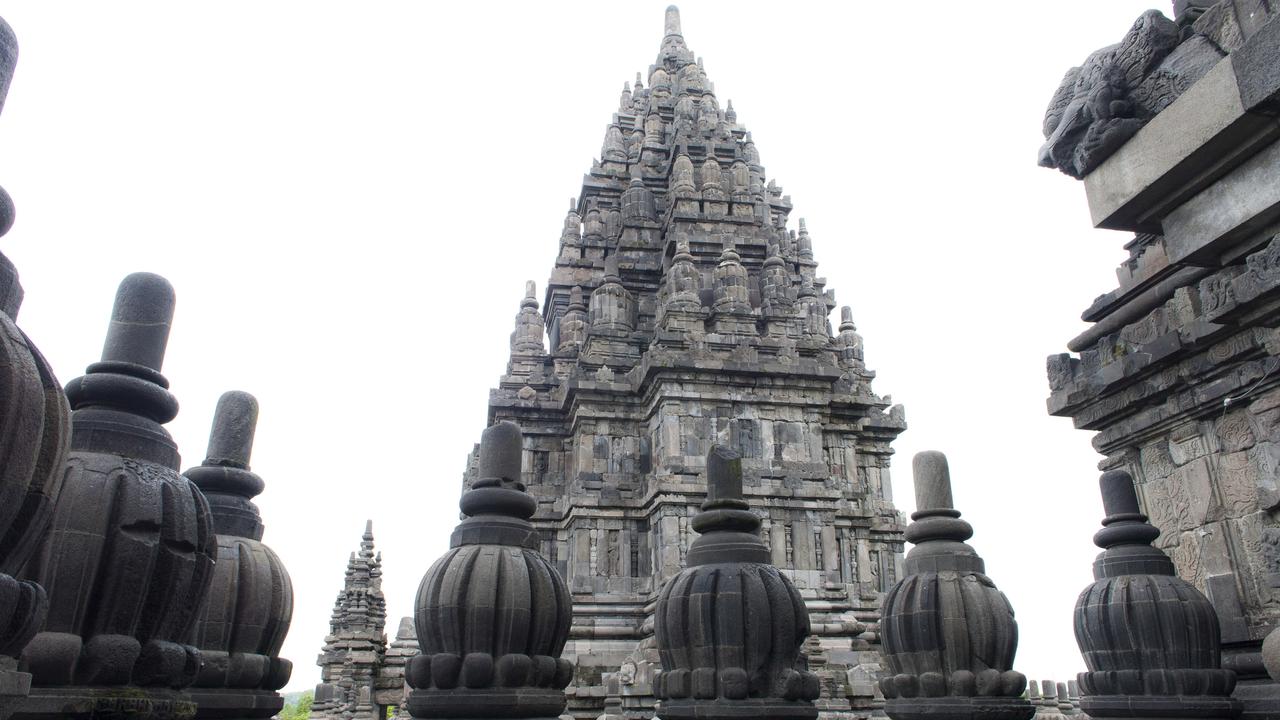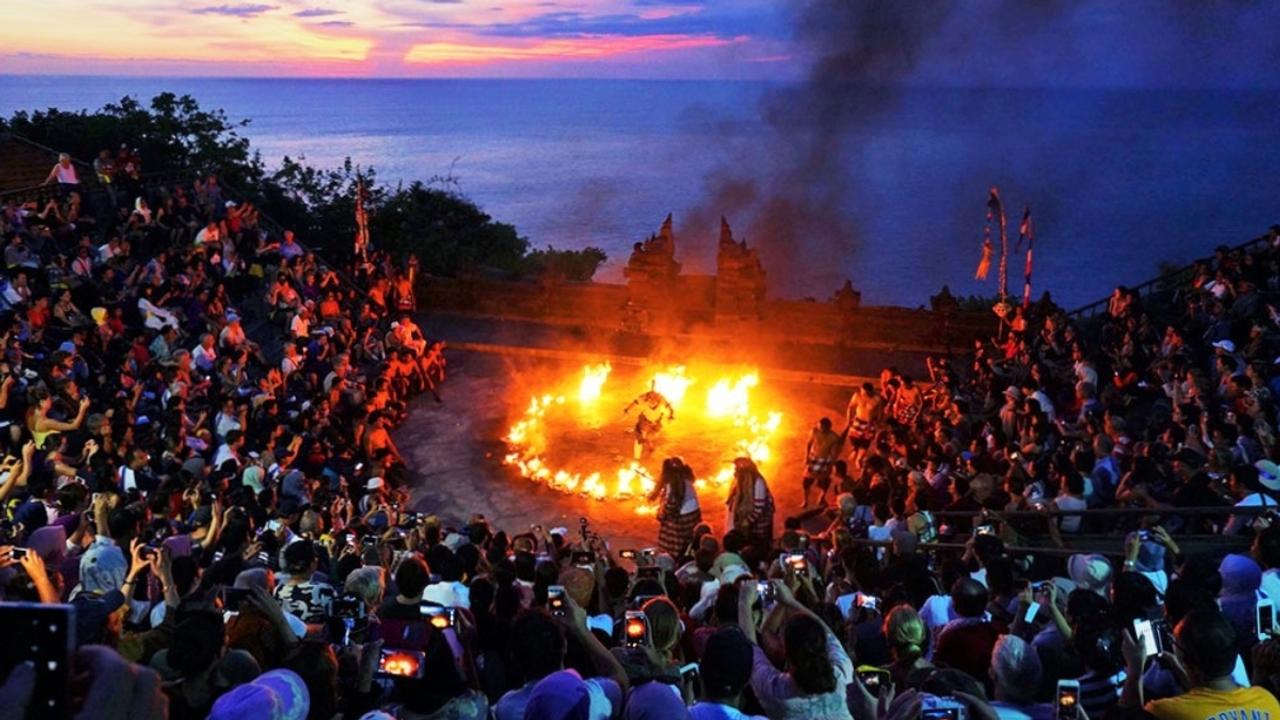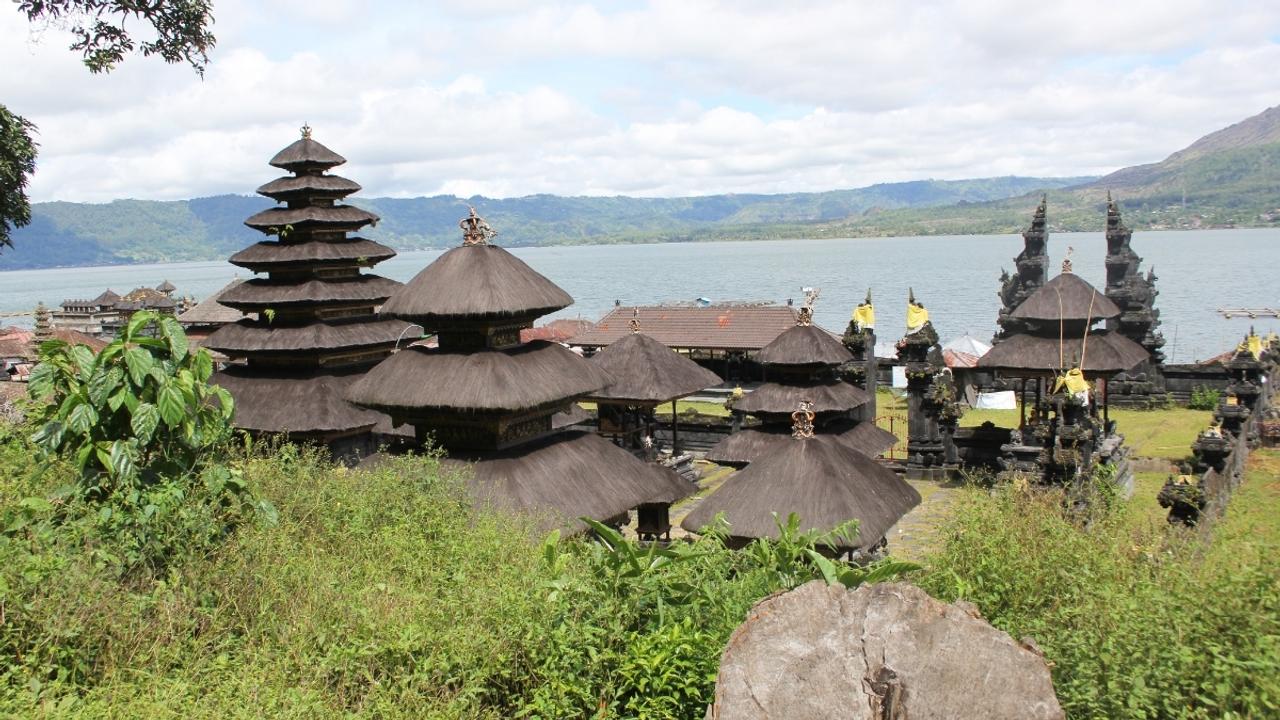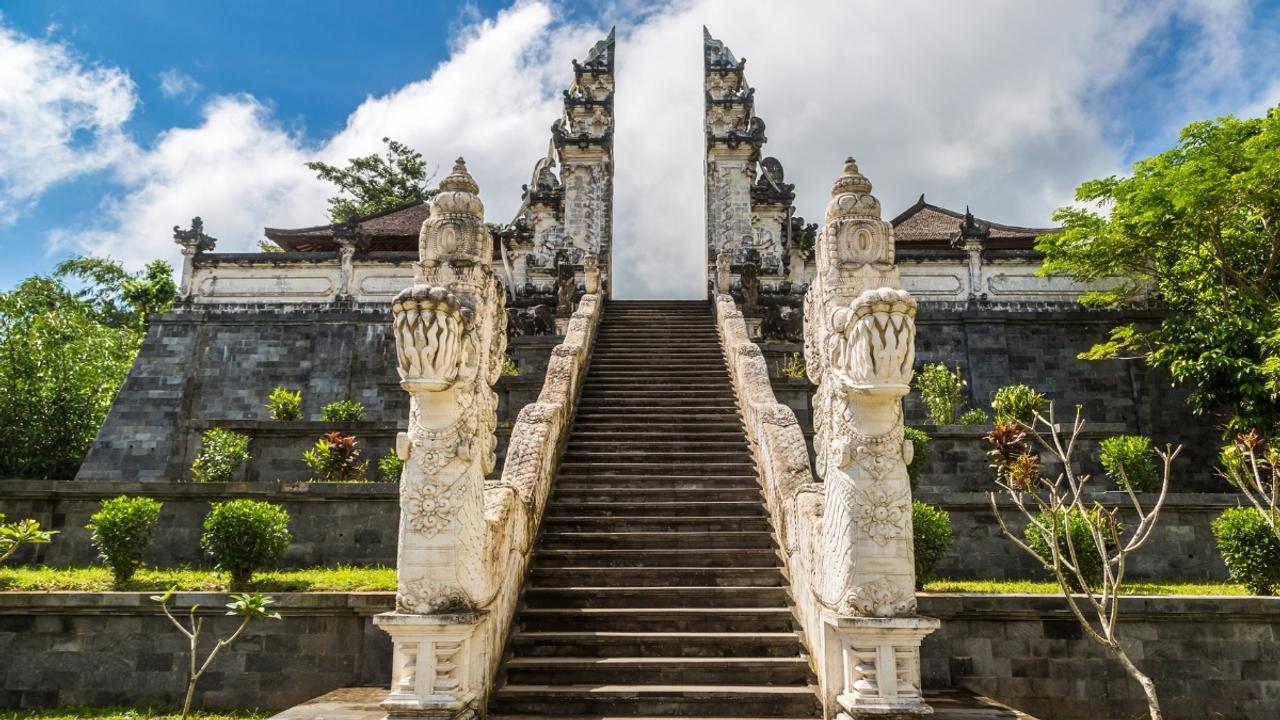Ancient Temples and Spiritual Sites in Indonesia
Indonesia’s temples and spiritual sites punctuate the islands as peaceful and poignant markers of the country’s religious culture and history. Walk among intricately-carved stones, witness sacred ceremonies and learn about Indonesia’s diverse beliefs.
There must have been something in the 9th century Indonesian air, when both Borobudur and Prambanan's - Java’s two colossal temple complexes - were built. They stand as enduring testaments to the island’s spiritual culture and history.
Borobudur
The serene spirit of Borobudur, one of the most well-known temples in Indonesia, is palpable as you ascend each level of the enormous stupa. The levels represent the stages on the path to enlightenment and take you past intricate carvings and 500 or so statues of Buddha gazing over the expansive views of the surrounding landscape.
It’s not an experience you’ll have to yourself. Due to the sheer number of people, visits here are highly regulated - down to a timed slot, assigned guide and a pair of ‘Borobudur sandals’ which you must wear (they’re quite funky, actually!)
The path to the central dome at the top offers no respite from the sun, so pack a hat and suncream for your otherwise gentle climb to Nirvana. At the highest level, join the seated Buddhas taking in the panoramic views of the heavenly landscapes below.
Prambanan
Just 30 miles away, the tranquil beauty of Borobudur is replaced by the exuberant, expertly carved towering temples of Prambanan. At the centre of the 240 temples, adorned with depictions of Hindu epics, Shiva’s dedicatory structure rises imperiously to a height of 47 metres.
Despite the crowds, it’s impossible not to experience a sense of awe as the tapering spires of the complex dominate the horizon, emerging from the green grass, shrubs and trees that surround them.
To further explore the Hindu epics, enjoy a Ramayana ballet performed under the watchful eyes of the temple gods. Expect atmospheric backdrops, colourful costumes, and the hypnotic gongs, drums and chants of gamelan.
What to expect from the monuments and ancient temples in Indonesia:
Feel the mystery of the enigmatic megaliths scattered throughout the Toraja region of Sulawesi.
Be blessed by Pura Besakih, the largest and holiest temple complex in Bali, set on the dramatic slopes of Mount Agung.
See ancient traditions still honoured at the Bali Aga villages.
Walk through the dramatic Gates of Heaven at Pura Lempuyang.
Be transported by the chants that accompany the Fire Dance (kecak) as the sun sets at Uluwatu.
Image gallery
More ancient religious sites in Indonesia to experience:
Toraja megaliths
Deep in the highlands of Sulawesi, the Toraja megaliths rise like silent witnesses to a world shaped by ritual and reverence. Worn by time, these ancient stones stand in solemn clusters, each one a marker of memory; a portal between the living and the departed.
These mysterious megaliths were created roughly 800 years ago and are related to ancestor worship. To walk among them is to step into a space where the weight of history and the pulse of the present meet in quiet communion.
Ancient traditions in Bali Aga villages
Tucked away in the folds of Bali’s highlands, the Bali Aga villages of Trunyan and Tenganan contain unique temple complexes that follow pre-Hindu traditions. These villages breathe with an ancient rhythm, untouched by the hurried hands of time.
The scent of burning incense drifts through the air, mingling with the earthy aroma of moss-covered walls and the distant salt of the sea.
Traditional woven textiles, dyed in sacred hues, flutter on wooden looms. The spirits of the community’s ancestors are honoured in whispered prayers, and in the careful way that offerings are placed each day before dawn.
Visions of Mount Agung
Beneath the sacred, smouldering presence of Mount Agung two ancient Hindu temples await.
The sprawling 8th century temple complex of Pura Besakih is Indonesia’s largest and holiest. It graces the volcano’s slopes with its vast, ascending labyrinth of stone, shrines, and stairways.
The air here is clouded by wisps of incense and the age-blackened stones are draped in golden cloth. Visit at dawn to see pilgrims in white placing offerings of flowers, rice, and candles upon ancient altars as the rising sun bathes the scene in hues of red and gold.
Pura Lempuyang on the east coast of Bali is famous for its arched entrance, symbolising a gateway to heaven. It perfectly frames Mount Agung and the coastal bays in the distance. Built in the 11th century, it’s a two-hour hike up through grasslands and Padan forests to receive your blessing from a priest using holy water extracted from bamboo stems that grow inside the temple.
Fire dance at Uluwatu
Since the 11th century, Pura Luhur Uluwatu has been majestically perched on the edge of a steep cliff looking out over the Indian Ocean, protecting the island of Bali from evil spirits. The sea temple features intricate carvings, stone statues and traditional thatched roof pavilions.
As the sun sets, you can enjoy a dramatic kecak ‘fire dance’ performance. A circle of 100+ men, all wearing checked lungis, rhythmically sway and steadily chant before lighting the fires that give this dance its name.
